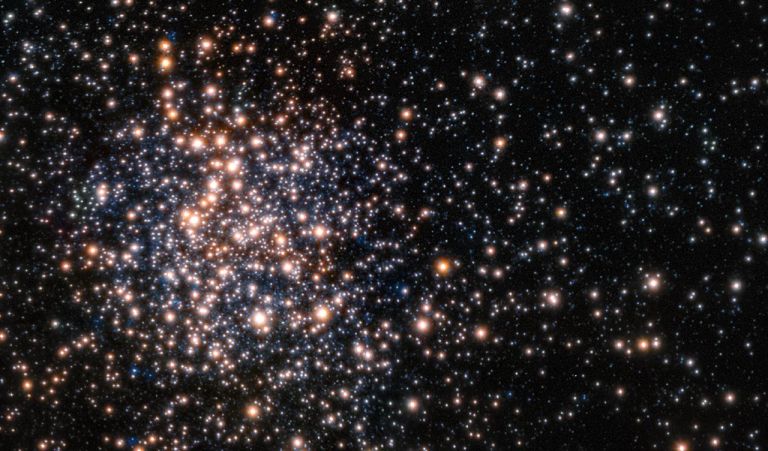A dense cloud of stars in the heart of the galaxy has survived as a ‘galactic fossil from the birth of the Milky Way.
Contents of the Terzan 5 globular cluster, which lies just 19,000 light-years from Earth and could give astronomers a way to examine how galaxies such as ours evolved, was reported in The Astrophysical Journal by astronomers in Italy, the Netherlands and the US.
“Back in 2009 we discovered that Terzan 5 harboured two sub-populations of stars with different chemical abundances: after seven years of research we finally succeeded in dating these populations,” says lead author Francesco Ferraro from the University of Bologna in Italy.
Globular clusters, large spherical densely packed collections of ancient stars, aren’t terribly rare – we know of roughly 150 in the Milky Way. But they’re interesting to astronomers because they contain some of a galaxy’s first stars.
Discovered four decades ago, Terzan 5 is – in this regard – no exception. Ferraro and his team peered at the globular cluster through the eyes of the Hubble Space Telescope, Keck Observatory on the island of Maunakea in Hawaii and the European Southern Observatory’s Very Large Telescope in Chile.
And sure enough, they found ancient stars – around 12 billion years old.
But alongside were much younger stars – only around five billion years old – making the Terzan 5 globular cluster unlike any other.
This means star formation in Terzan 5 didn’t burble along continuously over billions of years, but spurted in two distinct bursts.
“This requires the Terzan 5 ancestor to have large amounts of gas for a second generation of stars and to be quite massive,” says study co-author and Italian National Institute of Astrophysics’ Davide Massari, “at least 100 million times the mass of the sun.”
So how did Terzan 5 stay locked in stasis – and what triggered its second burst of star formation?
The team’s trying to find out. But despite its weirdness, Terzan 5 is quite similar in composition to the Milky Way’s galactic bulge, the mass of stars in the centre of the galaxy.
“Terzan 5 could represent an intriguing link between the local and the distant universe, a survived witness of the galactic bulge assembly process,” Ferraro says.
Jean G. Thomas













